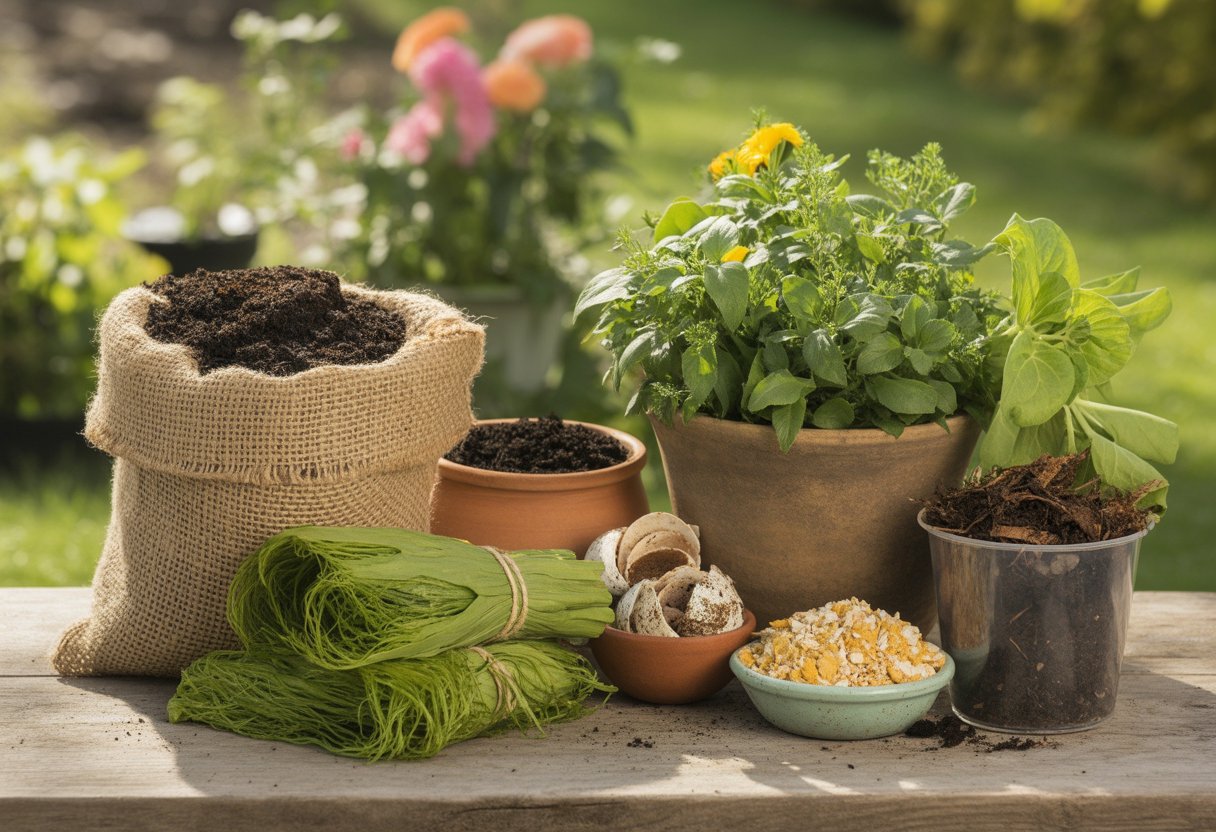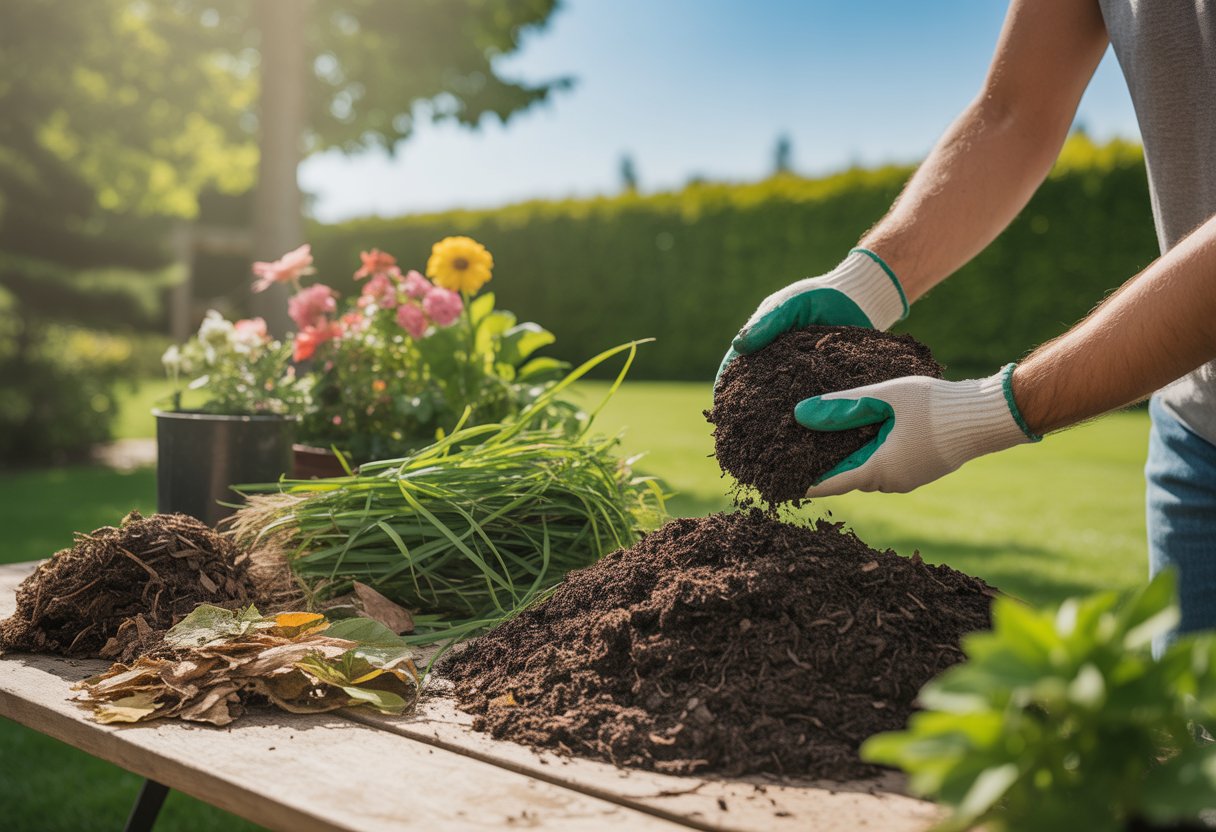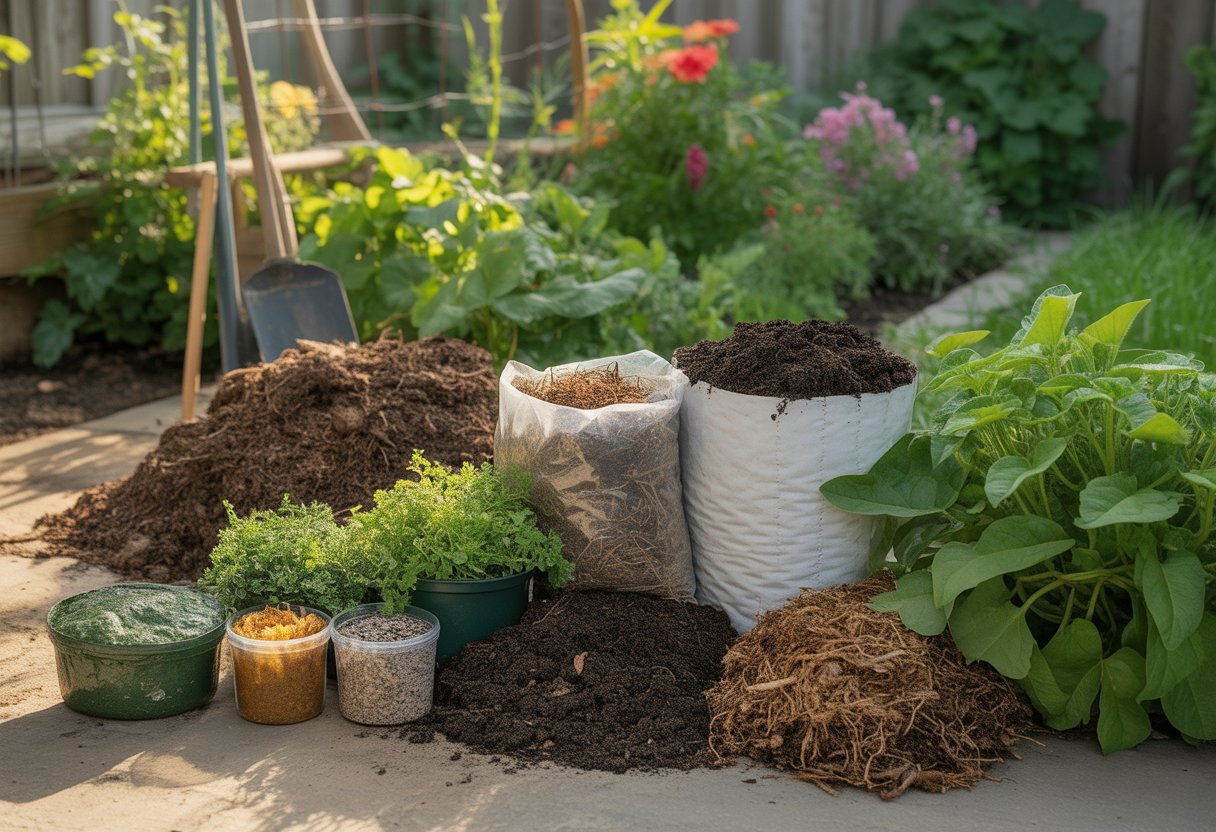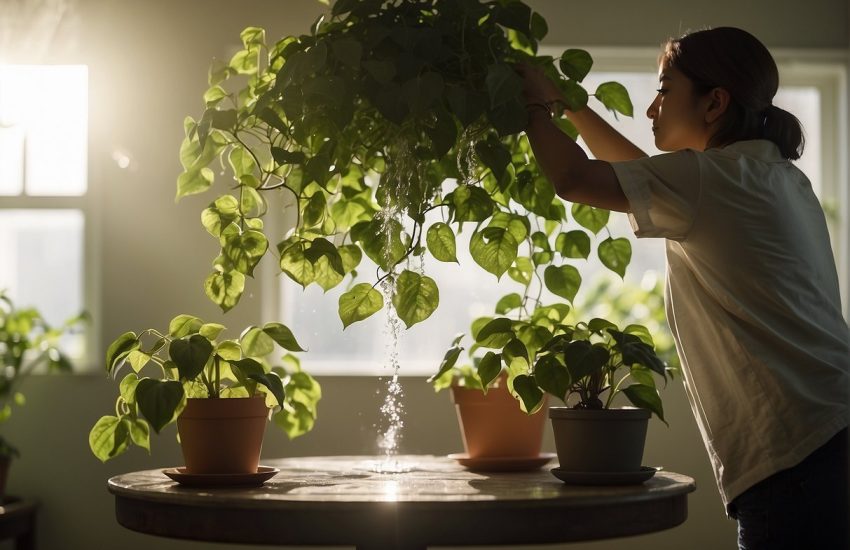Best Natural Fertilizers for Gardens to Boost Growth and Soil Health
Gardening success really comes down to soil quality and nutrient availability. Natural fertilizers improve soil health without harsh chemicals, which is why so many gardeners swear by them.

The best natural fertilizers for gardens include compost, aged manure, bone meal, and seaweed extract. They each provide essential nutrients in a sustainable way.
These options support plant growth and also help improve soil structure and encourage beneficial microbes.
Using natural fertilizers shrinks your garden’s environmental footprint. They also promote long-term vitality—something every gardener hopes for.
But figuring out which fertilizer fits your plants and soil? That’s where the magic (and a little trial and error) happens.
Understanding Natural Fertilizers

Natural fertilizers get their nutrients from organic sources. They add organic matter and deliver both macro- and micronutrients that gardens crave.
What Makes Fertilizers Natural
Natural fertilizers come from plants, animals, or minerals, and skip the chemical processing. Unlike the synthetic stuff, they release nutrients slowly and help build better soil over time.
Common choices are compost, manure, bone meal, and seaweed extracts. They’re packed with organic matter that feeds soil organisms and unlocks more nutrients for your plants.
You won’t find artificial chemicals or weird additives in them. Their nutrient mix depends on the source, but they help keep your garden’s ecosystem in balance.
Key Nutrients in Garden Fertilizers
Natural fertilizers deliver three big nutrients: nitrogen (N), phosphorus (P), and potassium (K). Nitrogen fuels leaf and stem growth. Phosphorus helps roots and flowers. Potassium keeps plants healthy all around.
You’ll also get micronutrients like iron, zinc, and manganese. These trace elements matter for enzymes and chlorophyll—basically, they keep everything running.
Some materials target certain nutrients. Bone meal, for example, is loaded with phosphorus. Blood meal brings the nitrogen. Mixing it up gives plants a balanced diet.
Benefits of Organic Fertilizers
Organic fertilizers add more organic matter, which means the soil holds water better and gets fluffier. That’s good news for the microbes working behind the scenes.
They also cut down on nutrient runoff and soil damage—problems that come with synthetic fertilizers. By sticking with organics, you’re gardening more sustainably.
Since they release nutrients slowly, it’s tough to overdo it. Plants take up what they need, and you waste less.
Types of Natural Fertilizers for Gardens
Natural fertilizers come in all shapes and sizes, each with its own set of nutrients and perks. Picking the right one depends on your soil and what you’re growing.
Animal-Based Fertilizers
Animal-based fertilizers include manure, bone meal, blood meal, fish meal, and bat guano. Manure (from cows, horses, chickens, you name it) adds nitrogen, phosphorus, and potassium, and it helps the soil feel more “alive.”
Bone meal is packed with phosphorus and calcium, so it’s great for roots and flowers. Blood meal delivers a big nitrogen boost for lush, leafy growth.
Fish meal and fish fertilizer give you nitrogen and trace minerals, plus they fire up the soil microbes. Bat guano? It’s a fast-acting option, especially for flowering plants, with a good hit of nitrogen and phosphorus.
These break down at different rates, so you can mix and match depending on what your garden needs.
Plant-Based Fertilizers
Plant-based fertilizers come from compost, green manures, alfalfa meal, and cottonseed meal. Compost is just decomposed organic stuff—it brings a balanced nutrient mix and helps soil hold water.
Green manures like clover or rye are cover crops you dig into the soil, boosting nitrogen and organic matter. Alfalfa meal is high in nitrogen and has trace minerals that wake up soil microbes.
Cottonseed meal releases nitrogen slowly, making it a go-to for acid-loving plants. These are good for long-term soil health and don’t usually cause over-fertilization headaches.
Mineral and Sea-Based Fertilizers
Mineral and sea-based fertilizers include seaweed fertilizer, kelp, and some natural mineral amendments. Seaweed and kelp bring potassium, magnesium, iron, and even plant hormones that help with stress and growth.
You can use them as liquid extracts or powders. They’re handy throughout the season, especially if your plants need a pick-me-up.
Mineral options like rock phosphate or greensand release nutrients slowly and add specific elements. They don’t work overnight, but they do support steady growth.
Application and Best Practices for Garden Fertilization
Getting the most out of your fertilizer means knowing your soil, picking the right application method, balancing nutrients, and keeping soil healthy. These pieces all matter for root growth, nutrient uptake, and soil structure.
Soil Testing and Analysis
Soil testing is the first step. Grab a soil sample from a few spots in your garden and mix them up for an average read.
You want to know pH, organic matter, and nutrient levels (N, P, K). Most plants like soil pH between 6.0 and 7.5.
You can use a lab or a home kit. Once you know what’s missing or in excess, you’ll know what kind of fertilizer—and how much—to use.
Fertilizer Application Techniques
Apply fertilizers when plants can actually take up the nutrients. Mixing them into the soil before planting helps roots get off to a strong start.
For established plants, surface application works, but you might need to water it in so nutrients reach the roots. Broadcasting, banding (putting fertilizer in a strip near roots), or side dressing during the season are all options.
Go easy—overdoing it can hurt the soil microbes and cause runoff. It’s usually better to feed in small, repeated doses than one big dump.
Balancing Fertilizer Ratios
Fertilizer ratios show how much nitrogen, phosphorus, and potassium you’re adding. Leafy veggies want more nitrogen, while root crops like extra phosphorus.
If you pile on too much of one thing, plants can’t absorb others. Keeping a balance helps soil structure and stops nutrients from washing away.
You can blend different organic fertilizers or buy mixes to dial in the ratios for your garden.
Maintaining Soil Health
Healthy soil is the backbone of a productive garden. Organic fertilizers make soil more crumbly and help it hold water.
Living soils are full of microbes that help with nutrient cycling and disease resistance. Avoid dumping too much fertilizer, which can mess with the microbial balance or compact the soil.
Mulching, crop rotation, and cover cropping all help keep soil in good shape and naturally fertile. Check in on your soil now and then to make sure everything’s on track.
Special Considerations for Garden Fertilizers

Getting fertilization right means matching the fertilizer to your plants, filling any nutrient gaps, and sometimes using liquid or soluble options. Paying attention to what your plants and soil need makes all the difference.
Choosing Fertilizers for Specific Plants
Plants aren’t all the same. Root crops need fertilizers with more phosphate for strong roots.
Leafy greens love extra nitrogen for lush growth. Flowering plants often want more potash to help blooms pop.
Fruiting plants need calcium and magnesium to keep their structure and enzymes working. If you tailor your fertilizer to the plant, you avoid imbalances and get better results.
Addressing Common Nutrient Deficiencies
It helps to spot nutrient deficiencies early. Yellow leaves usually mean a lack of nitrogen or magnesium.
Weak stems might signal a calcium problem. If new leaves are pale and growth is stunted, your plants could need more sulfur.
Balanced natural fertilizers with calcium, magnesium, sulfur, potash, and phosphate can help fix these issues. Soil testing lets you target what’s missing—no guesswork, less risk of overdoing it.
Liquid Fertilizers and Soluble Options
Liquid fertilizers deliver nutrients fast. They’re easy to use for foliar feeding or soil drenching.
They dissolve almost instantly, giving plants immediate access to essentials like nitrogen, potassium, calcium, and magnesium.
Soluble fertilizers blend smoothly with water. Gardeners often use them in containers or when they want tight control over nutrients.
They’re handy during critical growth phases. Plants can get a quick nutrient boost without messing up the soil balance.


